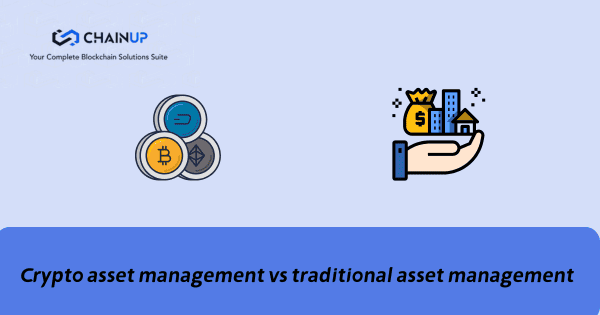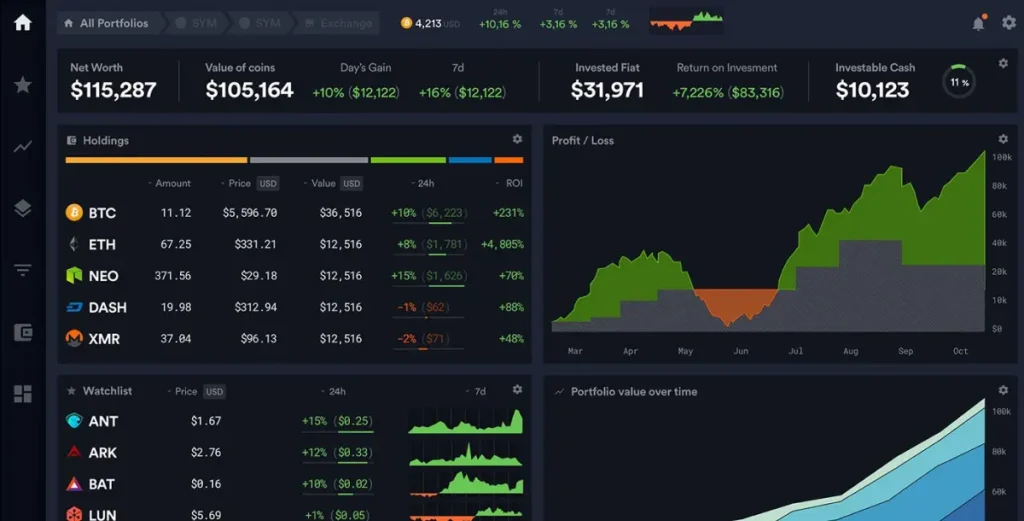Managing Digital vs. Traditional Assets: What You Need to Know
Managing financial assets effectively is critical for businesses, investors, and institutions, but the game is changing. The rise of digital assets is reshaping investment strategies, creating new opportunities—and risks—that traditional finance has never encountered.
Crypto asset management is no longer a niche interest; it’s becoming an essential part of diversified portfolios, offering high-growth potential, 24/7 market access, and innovative financial products that challenge conventional investment models. While both crypto and traditional asset management aim to optimize returns and mitigate risks, they differ significantly in structure, strategies, and regulatory considerations. Understanding these differences is crucial for investors looking to stay ahead in an evolving financial landscape.
What Is Traditional Asset Management?
Traditional asset management involves overseeing investments in conventional financial instruments such as stocks, bonds, mutual funds, real estate, and commodities. Asset managers, financial advisors, or institutions create diversified portfolios tailored to an investor’s financial goals, risk tolerance, and market conditions. These portfolios rely on centralized financial markets, banking systems, and regulatory oversight to ensure security and compliance.
Key features of traditional asset management include:
- Centralized Structure: Managed by banks, investment firms, and hedge funds under strict regulations.
- Stable and Established Markets: Long-standing financial instruments with historical performance data.
- Regulatory Oversight: Governed by financial authorities like the SEC (U.S.), FCA (UK), and MAS (Singapore).
- Diversification Strategies: Portfolio balancing between equities, bonds, and other assets to minimize risks.
- Professional Management: Expert advisors analyze macroeconomic trends, company performance, and market movements.
Traditional asset management is widely used by corporations, institutional investors, and high-net-worth individuals looking for stable, long-term growth with predictable returns.
What Is Crypto Asset Management?
Crypto asset management applies investment management strategies to digital assets like Bitcoin, Ethereum, stablecoins, DeFi tokens, and NFTs. Unlike traditional finance, crypto markets operate on decentralized blockchain networks, meaning transactions occur without intermediaries like banks or brokers. Crypto asset managers help businesses and investors navigate this dynamic market, balancing growth opportunities with security and compliance challenges.
Key features of crypto asset management include:
- Decentralized Markets: Transactions occur on blockchain networks without centralized control.
- High Volatility & Risk-Adjusted Returns: Crypto markets experience rapid price swings driven by market sentiment, regulatory developments, and technological advancements. While this volatility increases risk, it also presents opportunities for higher risk-adjusted returns.
- New Investment Instruments: Includes staking, liquidity mining, yield farming, and tokenized assets.
- Regulatory Clarity: Crypto regulations are evolving rapidly, with many jurisdictions now providing clearer compliance frameworks. The EU’s Markets in Crypto-Assets (MiCA) and updated Financial Action Task Force (FATF) guidelines are setting industry standards, reducing uncertainty, and fostering institutional adoption.
- Security Risks: Requires advanced security measures like cold storage, private key management, and smart contract audits.
Crypto asset management is essential for businesses seeking exposure to digital assets, whether for investment, treasury diversification, or Web3 participation.
Key Differences Between Crypto and Traditional Asset Management
| Feature | Traditional Asset Management | Crypto Asset Management |
| Market Structure | Centralized financial markets (NYSE, Nasdaq, etc.) | Decentralized blockchain-based markets |
| Assets Managed | Stocks, bonds, real estate, mutual funds, commodities | Cryptocurrencies, stablecoins, NFTs, DeFi tokens |
| Regulatory Oversight | Strictly regulated by financial authorities | Regulatory frameworks evolving; varies by region |
| Liquidity | Have structured liquidity but require settlement delays | Offers near-instant settlement, but smaller tokens may have liquidity challenges |
| Volatility | Relatively stable, influenced by macroeconomic factors | High volatility due to speculation and innovation cycles |
| Security Measures | Traditional financial security protocols | Requires private key management, cold storage, and smart contract security |
| Intermediaries | Banks, brokers, investment firms | Peer-to-peer transactions, DEXs, and CEX |
Which Asset Management Approach Is Right for Your Business?
Businesses and investors need to evaluate their risk tolerance, investment objectives, and regulatory requirements when choosing between traditional and crypto asset management. Many institutions are now adopting a hybrid approach—diversifying portfolios with both traditional and digital assets to hedge risks and capitalize on blockchain innovation.
For businesses looking to integrate crypto asset management into their strategy, selecting a reliable partner that provides secure infrastructure, compliance solutions, and investment optimization tools is critical.
At ChainUp, we offer secure, scalable, and regulatory-compliant crypto asset management solutions tailored to institutional needs. Our expertise in blockchain infrastructure, custody services, and DeFi integration empowers businesses to manage digital assets efficiently and securely. Explore how ChainUp can support your crypto asset management strategy today. Contact us to learn more.




